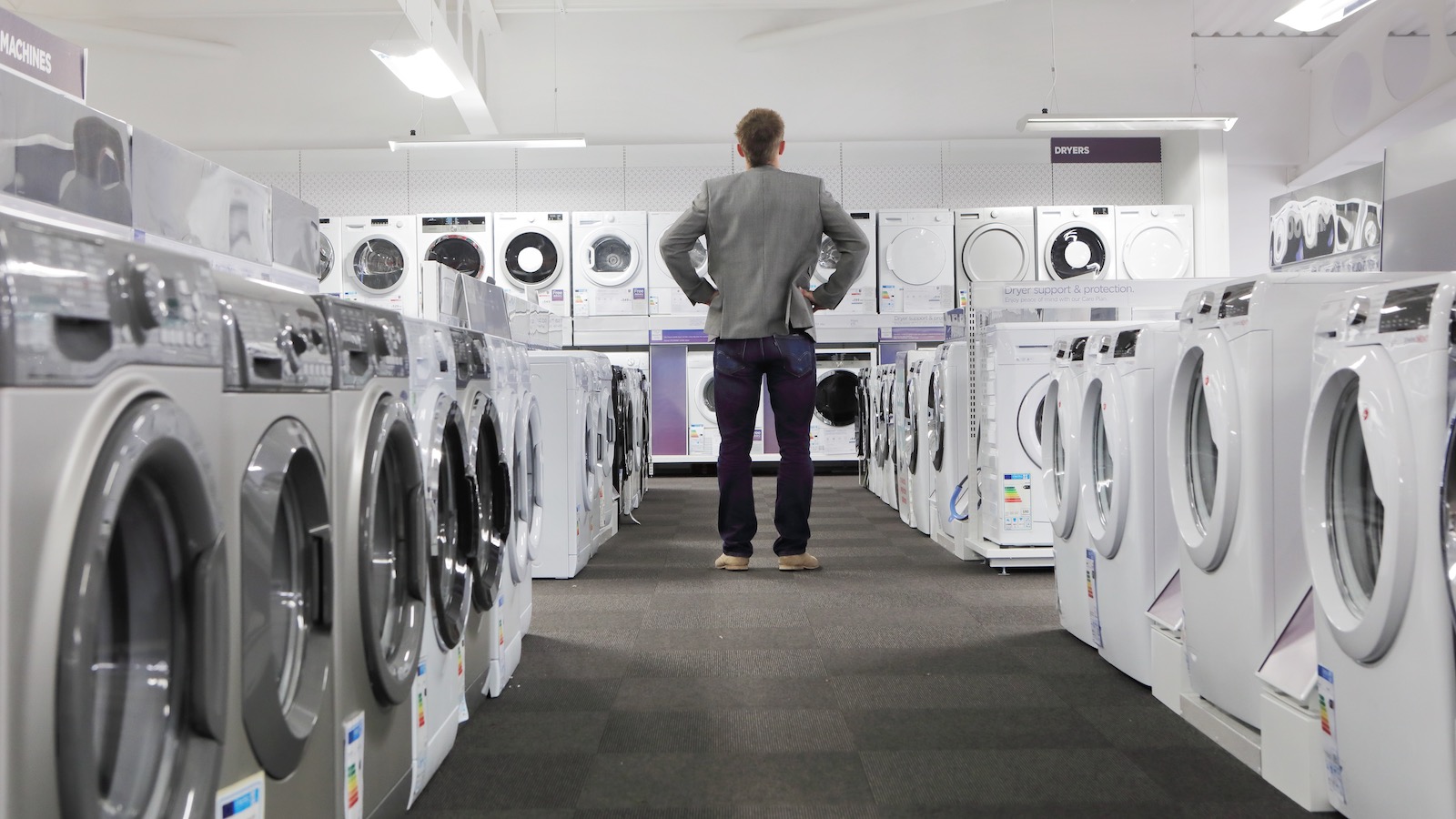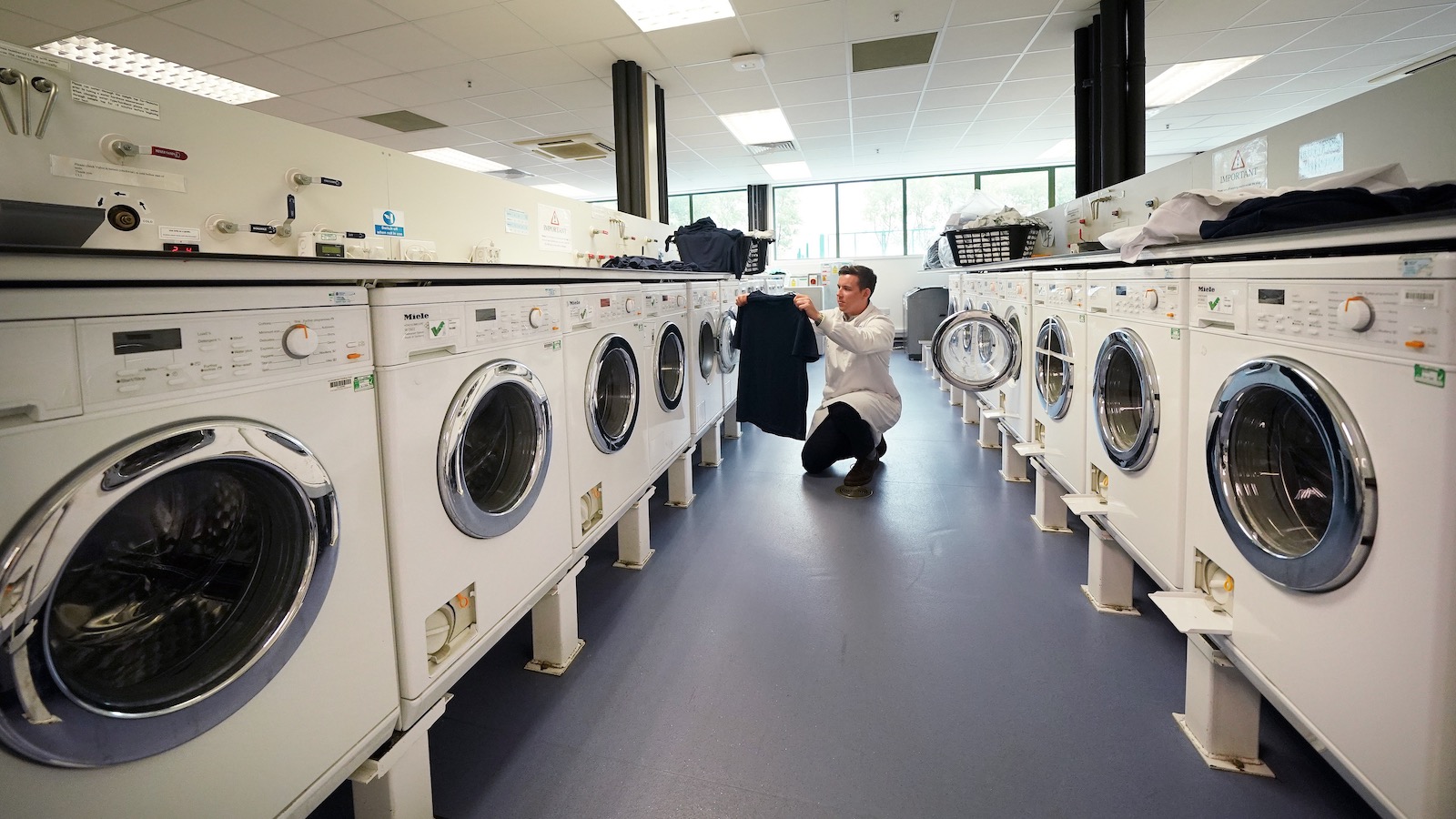
Doing laundry is responsible for approx 8 percent of a home’s annual electricity consumption, a figure that does not include the energy needed to heat the water swirling through the washing machine. Beyond that financial cost, the devices add mightily to the nation’s carbon footprint. On Thursday, the Biden administration announced new washer and dryer efficiency standards that could ease these burdens.
The updated standards — first reported by Grist — will result in top-loading clothes washers that are 11 percent more energy efficient than similar current machines while using 28 percent less water. Dryers will see up to a 40 percent reduction in energy consumption, depending on the model. The requirements are in line with current Energy Star efficiency standards and will apply to equipment manufactured after March 1, 2028.
“These rules represent an opportunity for more efficient devices that provide the same level of performance but have reduced operating expenses,” a Department of Energy official told Grist, speaking on condition of anonymity. The government estimates the measures would shave $2.2 billion a year from Americans’ utility bills and eliminate 71 million tons of planet-warming carbon dioxide emissions over 30 years. This is equivalent to the annual emissions of nearly 9 million homes.
The updates stem from an agreement manufacturers reached with environmental and consumer advocacy organizations last fall that outlined efficiency standards and implementation timelines for six device categories. The government has already adopted the group’s recommendations for stoves and refrigerators and freezers. New criteria for other refrigeration products (such as wine coolers), as well as dishwashers, are expected in the coming months. If a consumer were to trade in the least efficient model available today to the most common models available under the new efficiency standards, they would save about $120 a yearaccording to the Appliance Standards Awareness Project, a nonprofit that helped negotiate the new standards.
“We are happy that the [Department of Energy] adopted this joint recommendation that saves some energy,” Jill Notini, vice president of the Association of Home Appliance Manufacturers, or AHAM, said in an email. “[It] also enables manufacturers to provide consumers with the products and features they love and rely on.”
The updates come amid a conservative backlash. Fox News called the changes a “war against devices,” which would leave clothes “dirtier and stinkier.But Joanna Mauer, deputy director of the Appliance Standards Awareness Project, a nonprofit organization involved in negotiating the new standards, points out that Energy Star models tend to score higher than more conventional appliances in Consumer Reports testing.
“These new standards will help ensure that dryers do not overdry clothes,” she said. “Overdrying clothes not only wastes energy, but can also shrink or otherwise damage them.”
AHAM was one of the organizations that pushed back on the government’s initial device proposals, released in 2022 and 2023, and managed to weaken several of them through the joint recommendations. The most notable change involves gas stoves – a debate that proved particularly controversial. The standards for some washer models were also slightly lower than those first proposed by the Biden administration. But, Mauer said, they “still achieve the bulk of the potential consumer savings.”
This is the first time washer and dryer standards have been updated in more than a decade; a move Mauer said was long overdue. By law, the government is supposed to review device standards every six years, a procedure that AHAM criticized as “resulting in a never-ending regulatory stream regardless of who is in the White House.” But the Trump administration has stalled the process, pushing reviews well past their deadlines. In 2022, the Department of Energy has a legal settlement with environmental, consumer and housing organisations which outlined the current schedule.
While he would have welcomed faster change, Joe Vukovich, a lawyer for the National Resources Defense Council who participated in joint recommendation negotiations, said the end result proves that progress is possible.
“This is not a sector where manufacturers are just uniformly hostile to regulation,” he said. “Stakeholders can come together and get something that we consider a win-win.”







